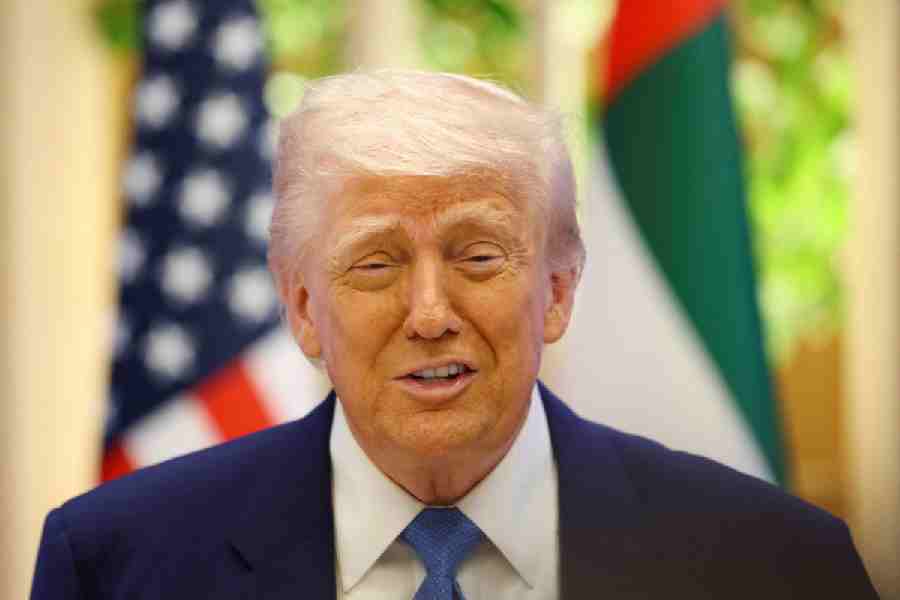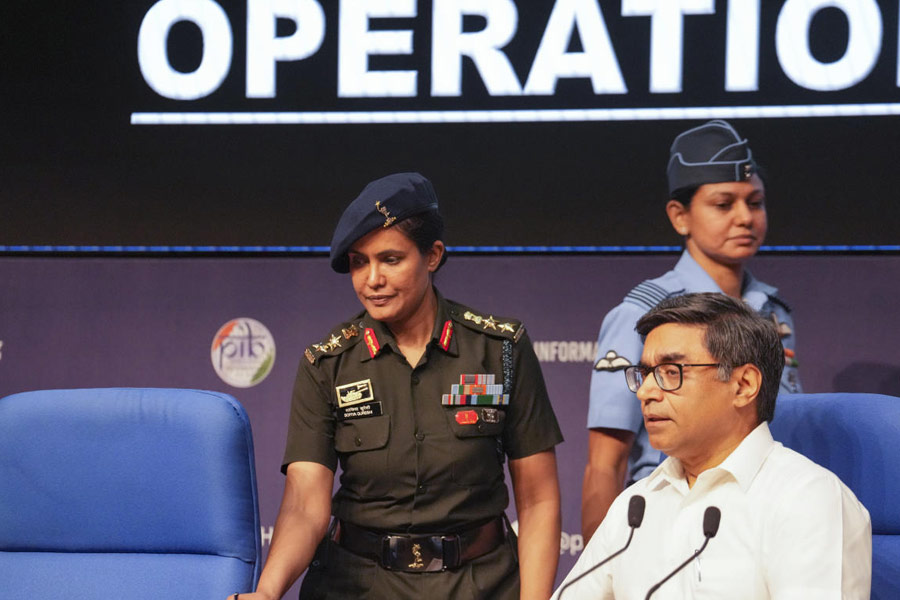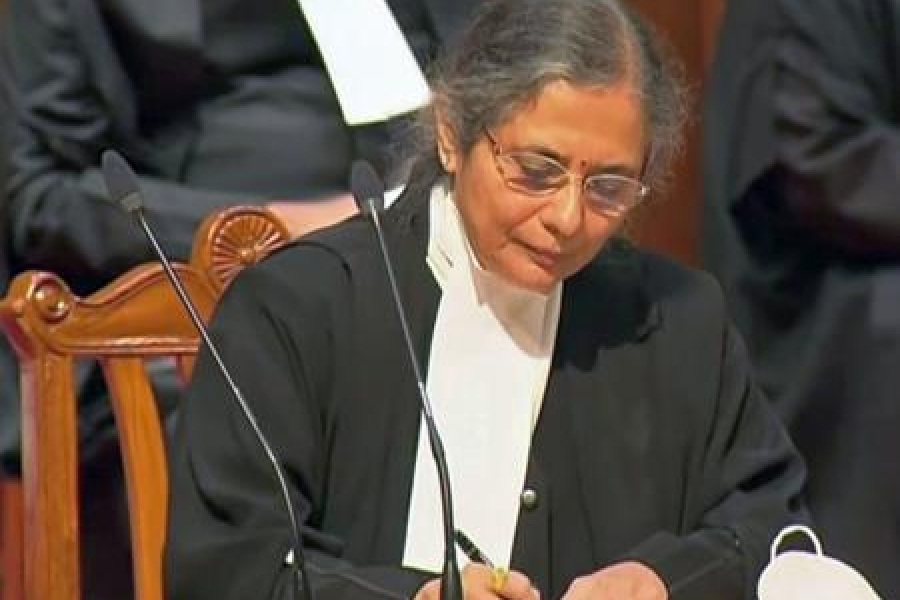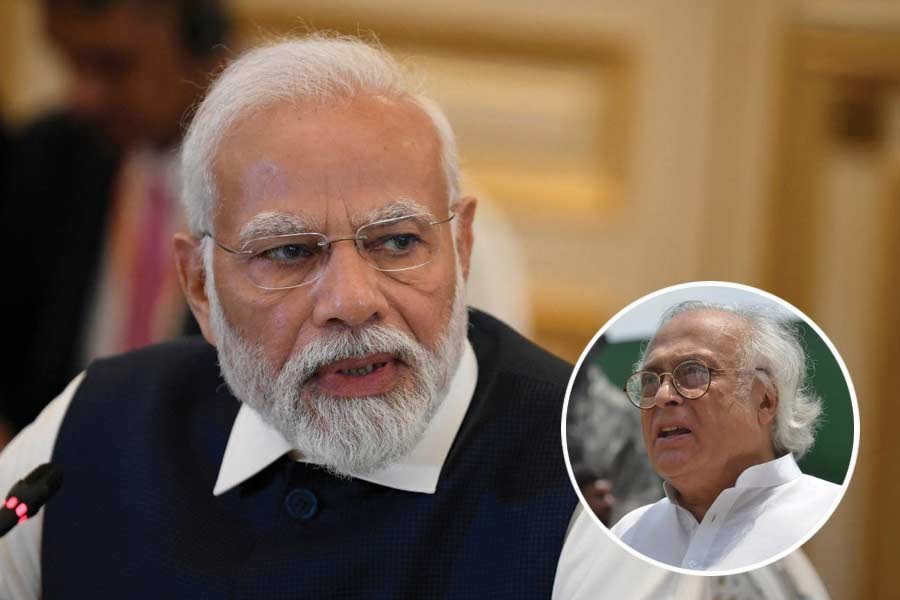 |
 |
 |
 |
| (From top)Soha Ali Khan and Jackie Shroff sport period jewellery designed by Anjali Jewellers in stills from the film Antarmahal; Radhika Backliwal Narain of Indian Arts Palace with meenakari and kundan antique pieces |
They’ve always said that old is gold. So, in case you haven’t worked it out yet, remember that a huge solitaire can’t compete with a classy, antique piece. Even an inspired lookalike or a perfectly formed replica will work the same magic. The fact is that old is truly the way to go.
Anyone who has doubts about the old-is-gold look should step inside a movie theatre. Moviegoers watching Rituparno Ghosh’s latest movie Antarmahal face one dilemma: should they keep their eyes on Jackie Shroff at his elegant best playing a zamindar. Or, should they focus on the antique pieces of Rajasthani and Gujarati jewellery like the kundan-work pieces in his turban and the regal-looking kada on his wrist. A brooch and a thick chain complete the ensemble. In the movie the women too are decked up in elaborate accessories like mathar kanta (hairpin), as well as tiklis, kaanbalas, nakashi balas (bracelets), payer mol (anklets) and joroya (or jadau) jewellery.
Yes. The antique look is back with a flashy bang. We’re seeing it both in the world around us and on the big screen. In the not too distant future, there’ll be more antique lookalikes in Vidhu Vinod Chopra’s upcoming film, Yagna, that stars the Big B himself.
Others too have been making the most of the antique look. Remember Aishwarya Rai who showed off traditional gold designs in Rituparno Ghosh’s Chokher Bali and Raveena Tandon who sparkled in old-fashioned joroya pieces in Sahara Manoranjan’s Saheb Bibi Gulam? And who can forget Vidya Balan as Lolita in Vidhu Vinod Chopra’s Parineeta, who dazzled with creations inspired from traditional Bengali and Rajasthani jewellery.
Indian women have been quick to take their cues from the screen goddesses and are rediscovering the pleasures of the faded, antique look as they update their lockers. “The look that is ruling today is very royal, very Indian,” says Anargha Chowdhury of Anjali Jewellers, the creators of jewellery for Chokher Bali, Saheb Bibi Gulam, Parineeta and Antarmahal, period films that have the actresses dressed in breathtaking antique jewellery.
“In the world of fashion design there has been a revival of styles and designs,” agrees Asha Kamal Modi who has dedicated her collections to the 18th and 19th century Panchchikam jewellery designs of Gujarat and Kutch that also use silver generously.
In the glittering showrooms across the country, jewellery that was originally crafted in Bengal, Gujarat, Kutch and Jaipur many centuries ago, is inspiring contemporary jewellers to launch collections that are entirely blasts from the past. What’s more, since women clamour for exclusive pieces, antique jewellery promises to stand out in the crowd.
Explains jewellery designer Naina Balsaver, a die-hard fan of Mughal designs, “Tastes are veering to Madhubala’s large stone- encrusted nath (nose-ring) in Mughal-e-Azam, Meena Kumari’s jhoomar in Pakeezah, Suraiya’s massive rani-haars, and Nargis’ kundan bajubands.”
 |
 |
 |
| (From top) Jewellery designer Naina Balsaver sports period picks from her latest collection and more jewellery from the same line ; antique earrings from Amrapali |
If that’s not enough, there’s even a revival of Victorian jewellery, modelled on English pieces made in the 1800s. According to Balsaver, Victorian jewellery is much in demand as it exudes an antique look while being affordable (since it is a combination of gold, silver, precious and semi-precious stones). Silver is often the metal of choice to set precious (and semi-precious) stones ? going by the success of Modi’s collections and Victorian designs. Says Balsaver, “Antique style jewellery is replete with the romance of the ages gone by while being very glamorous at the same time.”
While some may argue that traditional pieces were always in heavy demand during the wedding season, there’s no questioning that today their popularity is at an all-time high. Jewellery designer Maheep Kapoor, who recently unveiled her collection at a new store in Delhi’s Gold Souk says that a large part of her collection celebrates antique designs. “Today women clearly want conversation pieces and therefore their current demand,” she says.
Modi’s love for traditional jewellery made her delve into the past to create designs that are now making a fashion statement. Her other goal was to wean women away from gold to ‘make’ them appreciate designs that teamed sterling silver with semi-precious stones. Why deck up the Modi way? Well, Panchchikam jewellery cannot be mass produced, which makes the jewels exclusive. And since the base metal is not gold, but silver, it is affordable.
What makes Panchchikam jewellery easily identifiable is that the entire piece is set in silver as the base and then dipped in gold. “A reason for opting for silver as the base was that it is malleable and also resembles the more expensive platinum,” she explains. Modi’s Panchchikam jewellery can only be made by craftspersons in Gujarat and Kutch who’ve learn the craft from their forefathers. Each piece of jewellery takes nearly two months to create. Haslis (neck bands), heavy jhumkas, huge rings (that put even bulbous cocktail rings to shame), kadhas (thick bangles) are hotsellers at her showroom.
The return of antique jewellery also means that big is truly in and delicate is out. Balsaver takes her cues from Mughal jewellery that was known best for the intricate enamelling on the back of the gold ornaments while the front glittered with bright uncut stones. Says Balsaver, “The Mughals didn’t believe in cutting the stones unless a flaw was meant to be removed from it. What we know as timeless Mughal jewellery was a rhapsody of uncut diamonds, enamel and 18-karat gold. Every square millimetre was enhanced with diamonds and translucent enamel floral motifs and geometric patterns.”
While Balsaver’s designs go heavy on uncut stones, she embellishes each piece with Mughal motifs taken from nature ? birds, flowers, trees, leaves ? and sometimes even serpents and elephant heads. “This is dress-up jewellery that can make anyone look and feel like royalty. The large pieces can transform an outfit,” she says.
 |
 |
 |
| (From top): A model shows off jewellery from Art Karat; Asha Kamal Modi, the designer behind the brand; an antique piece from Art Karat |
Jaipur-based Amrapali is also known for its designs that take their cue from the olden days. Amrapali’s latest collection has lots of kundan and meenakari. Kundan is the Mughal inspired art of setting precious and semi-precious stones into gold (sometimes even silver). In kundan pieces, the stones are embedded in the gold rather than secured by a claw.
Meenakari is being revived in Jaipur and is a laborious process by which an ornament is crafted in gold and then handed over to the artist to draw a design over. An engraver then carves the outlines of the design. The enameller then fills in the engraved portions with colour. The piece is then left in the fire for an hour for the paint to set. According to Radhika Backliwal Narain, art collector, art expert and managing partner of Indian Arts Palace that has been dealing in Indian art, antiques and fine jewellery since the 1840s, meenakari had its origins when enamellers were brought from Lahore in the 17th century and subsequently settled in Jaipur. The kundan ornaments were worked upon with enamelling so that the piece got two perfect faces ? with the precious stones on one side and enamelling on the other. This art is obviously getting a leg up from contemporary jewellers.
So what other styles are the current rage? There’s Victorian jewellery that’s also creating a buzz. Always one to reach into the past, Balsaver has turned her attention to Victorian jewellery which she says is “a blend of tradition and trend.”
Balsaver says that the Victorian period was famous for its eclecticism, its mixed motifs, blend of metals and precious and semi-precious stones. History has it that Queen Victoria’s love for her husband and her children inspired jewellery designs that were romantic and sentimental and so all about flowers, hearts, bows and more. Semi-precious gems were also used liberally which helped keep prices affordable.
The base of this style of jewellery was constructed with 18-karat gold and accented with semi-precious stones or filigree-work. The upper portion of the jewel was fabricated in contrasting sterling silver and encrusted with diamonds for effect. “Today this jewellery is being replicated in silver in trendy designs using precious and semi-precious stones. This jewellery is, therefore, perfect for both formal and informal dos, as well as officewear,” says Rajesh Kumar of Pyare Lal Jewellers, specialists in Victorian jewellery.
While designers are flooding their shelves with the Victorian look, stones like garnets, corals, amethysts, turquoise and pearls are teamed with the gold and silver combine. “Sometimes the piece de resistance is a focal stone in the centre, again a very Victorian element,” says Kumar.
Look-alike antique pieces of jewellery don’t come cheap and at Anjali Jewellers, the price of even a simple mathar kantha (ornate hairpin) could start at about Rs 4,000. Heavy kaanbalas, haslis and sitahaars are also up for grabs while the price of a set would go up to Rs 45,000 and more.
But high prices needn’t be an issue. Modi’s jewellery collections carry price tags that go upwards of Rs 500 to scale Rs 35,000 while each offers the wearer a bit from the lost past. But those looking for genuine antique jewels needn’t despair. Narain, a qualified gemologist, says that connoisseurs continue to hunt out the true antique jewels and that the genuine stuff isn’t necessarily expensive, starting upwards of Rs 10,000.
She says, “And above all, antiquity can never be outdated. If anything, it can only make a great fashion statement.”
Antarmahal photographs courtesy: Anjali Jewellers
Other photographs by Jagan Negi










